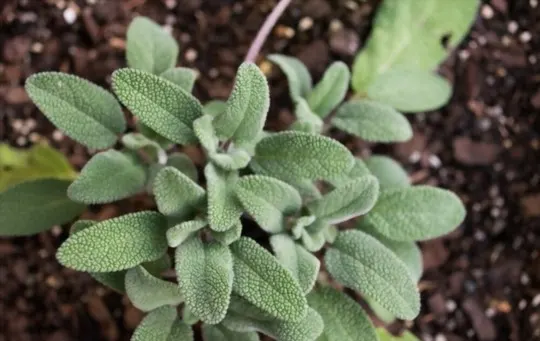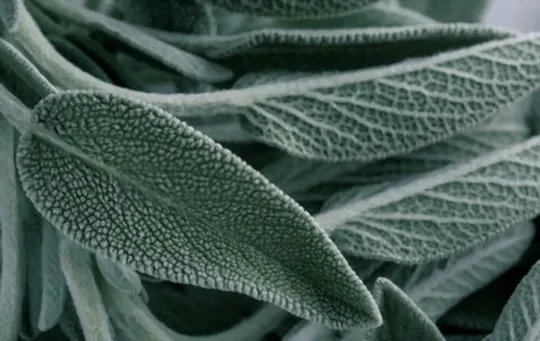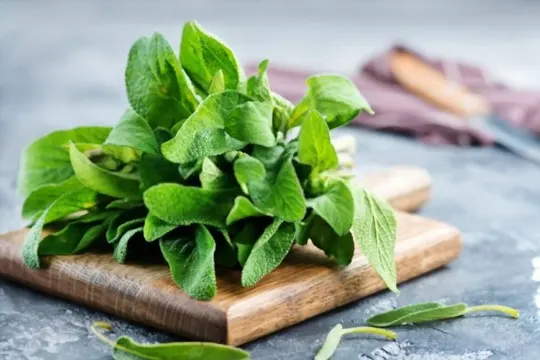Among variants of culinary herbs, sage might be the least known among the masses.
Thyme, rosemary, and basil are the most common ones that are found in most kitchens.
However, this doesn’t mean that sage is an unsuitable culinary herb.
In fact, it’s a natural enhancer that makes the dish an utter delight.
It’s a versatile herb suitable for different types of recipes.
That brings us to the question- what does sage taste like?
If you’re wondering the same, keep reading this as we reveal what it tastes like, its taste similarities, and how to cook this herb.
What is Sage?

Sage is one of the numerous names for this herb.
It’s officially known as Salvia officinalis and is a family of Lamiaceae, which also include rosemary, oregano, thyme, perilla, and more.
This herb has been in existence for centuries and is known to use for various purposes, including warding off evil spirits.
The Romans used this herb to treat sore throats, ulcers, and wounds.
It’s an evergreen shrub that bears purplish or blue flowers and has a woody stem.
This herb is found throughout the world but is native to the Mediterranean region.
Unlike other herbs, this one has a fluffy appearance, while its leaves are oval and have a dusty appearance.
Sage has a unique taste profile and is mainly used as a seasoning ingredient, like any other culinary herb.
Besides its usage as a culinary herb, it’s known for its medicinal use.
There are variants of sage, but Salvia officinalis is the species for kitchen use.
What Does Sage Taste Like?

Sage, when added with other ingredients, tastes incredible.
Its intense aroma enhances the flavor of a dish. But how does it taste on its own?
When consumed alone, it may not be the best-tasting food item.
Like any other herb, it’s slightly bitter, minty, and has an earthy aroma.
It’s similar to rosemary when it comes to flavor but is more intense.
Sage has a grassy taste with a hint of lemon notes.
So, it would be better to avoid mixing it with other strong-flavored spices as the taste of it may become too overpowering.
This aromatic spice blends well in recipes, including stews, soups, and tea.
Seasoning ingredients like sage, basil, or rosemary might not be the star item in dishes but plays a vital role in enhancing the overall taste.
Just adding a small amount of these herbs changes the flavor of a recipe.
The intense flavor and aroma play a crucial role in this.
Therefore, it’s always advisable to use culinary herbs in small quantities.
You may also have it fresh or dried.
The taste remains the same, although the potency may vary.
Dried ones are slightly bitter and concentrated, unlike fresh sage.
If you plan to use dried sage, be wary of the quantity used.
Regardless, both deliver the same result, more or less.
Besides, the nutritional content stays the same.
Sage is packed with nutrients and contains various medicinal properties that benefit your health, including oral health and improving blood sugar levels.
How to Cook and Serve Sage?

Sage is mainly associated with Italian and French cuisine.
However, you may improvise it into your own style of cooking.
This herb goes well with any dish, including meat-based and seafood recipes.
It also goes well with salads, pasta, gnocchi, and rice.
You may also mix this herb with fellow spices like rosemary, juniper, marjoram, thyme, and oregano.
While using fresh sage, take out the leaves from the stems and wash them off in clean cold water.
If you’re using dried sage, use it according to the recipe.
Fresh sage makes an excellent ingredient in stews, vegetable soups, and tomato sauces.
It also tastes fantastic in mashed potatoes.
Dried sage is often used in baking items like waffles, cakes, biscuits, pancakes, and muffins.
It also makes an excellent of dried fruit, including raisins and prunes.
Sage may not be readily available in some places.
If you have the same issue, these are the herbs you may substitute it with:
- Bay leaf.
- Basil.
- Rosemary.
- Oregano.
- Mint.
- Thyme.
- Tarragon.
Note: It’s advisable not to consume this herb if pregnant as it may cause uterine contractions.
Conclusion
Sage might not be the star ingredient in various recipes, but the inclusion of it in dishes enhances the flavor.
Its aromatic flavor changes the entire taste of the dish.
Not only does it enrich your dish, but it is also pretty nutritional.
You may either opt for fresh or dried sage based on availability.
Add this aromatic herb to your next dish or recipe to experience its taste firsthand.
Having it alone may not have the best taste or flavor but incorporating it with other ingredients takes the recipe to the next level.

What Does Sage Taste Like? Does it Taste Good?
Ingredients
- Sage
- Ingredients from your favorite recipes
Instructions
- Depending on the ingredients used, the cooking method, and the type of dish, the taste of the food can vary greatly.
- Make sure to select a recipe that will elevate the food’s original flavor, and enjoy experimenting with different recipes!

Andrew Gray is a seasoned food writer and blogger with a wealth of experience in the restaurant and catering industries. With a passion for all things delicious, Andrew has honed his culinary expertise through his work as a personal chef and caterer.
His love for food led him to venture into food writing, where he has contributed to various online publications, sharing his knowledge and insights on the culinary world. As the proud owner of AmericasRestaurant.com, Andrew covers a wide range of topics, including recipes, restaurant reviews, product recommendations, and culinary tips.
Through his website, he aims to inspire and educate fellow food enthusiasts, offering a comprehensive resource for all things food-related.

Leave a comment